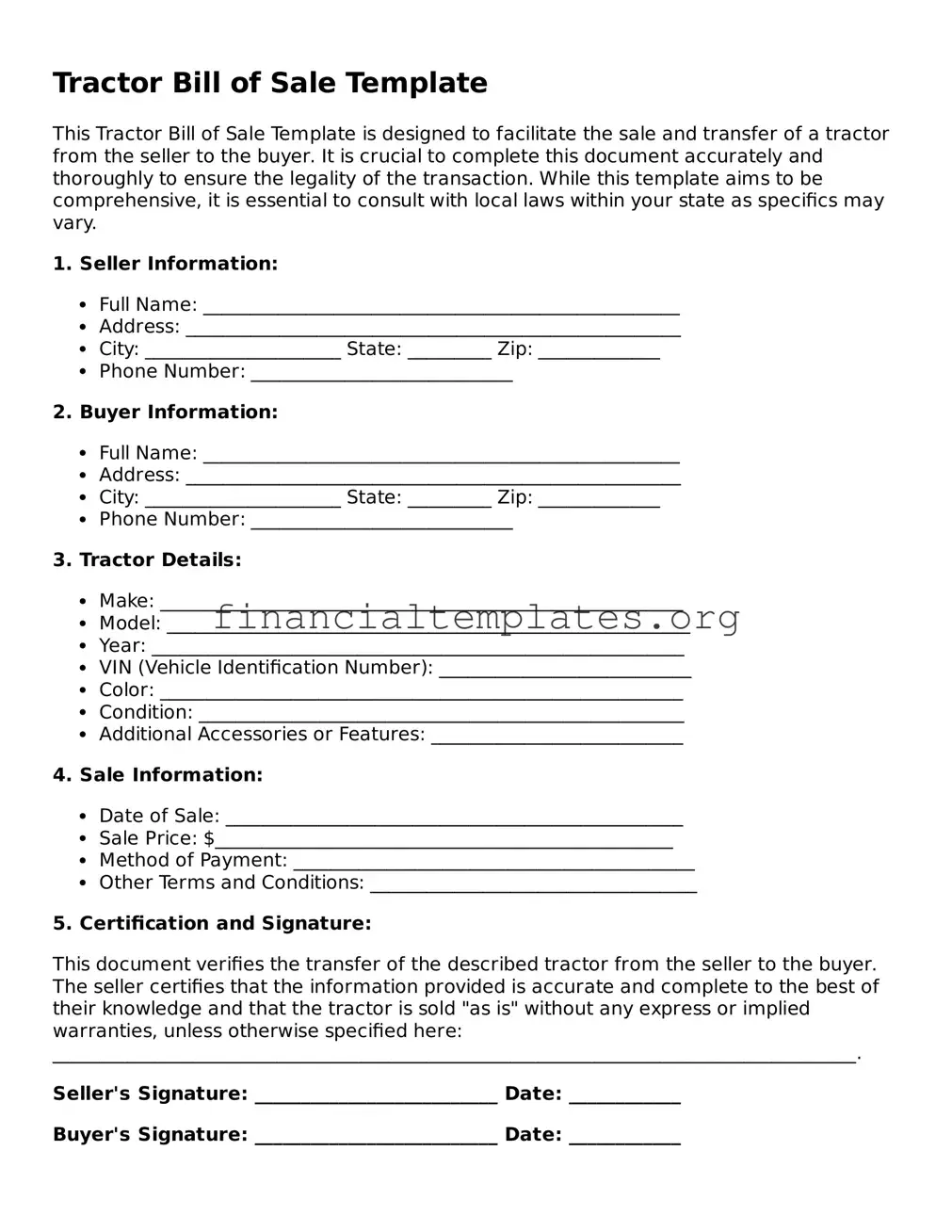The Vehicle Bill of Sale is closely related to the Tractor Bill of Sale, as both serve as legal documents to confirm the transfer of ownership of a vehicle from a seller to a buyer. These documents typically contain details like the make, model, and year of the vehicle, the purchase price, and the names and signatures of both parties involved in the transaction. While the essence of the information recorded is similar, the Vehicle Bill of Sale is more commonly used for automobiles, trucks, and motorcycles.
A Boat Bill of Sale is another document that bears resemblance to the Tractor Bill of Sale, providing proof of purchase and transfer of ownership for a boat. Just like with tractors and other vehicles, this legal document details the transaction between buyer and seller, including specifics about the boat such as its size, type, make, model, and serial number, along with the sale price and the parties' signatures. The key difference lies in the type of property being sold and transferred.
Similarly, an Aircraft Bill of Sale functions much like the Tractor Bill of Sale by facilitating the sale of an aircraft. It includes critical details about the transaction, such as the make, model, and serial number of the aircraft, the names and addresses of the buyer and seller, the sale price, and the date of sale. Both documents serve to legally document and register the change of ownership, even though the types of vehicles involved differ significantly.
A Bill of Sale for Business Equipment shares similarities with the Tractor Bill of Sale, as it is used to record the sale and transfer of ownership of business-related equipment. It includes information such as a description of the equipment, the sale price, and the parties involved. This type of bill of sale can encompass a wide range of equipment, from office furniture to industrial machinery, similar to how a Tractor Bill of Sale is specific to tractors and related equipment.
The Firearms Bill of Sale closely parallels the Tractor Bill of Sale by providing a legal record of the sale and transfer of ownership of a firearm from one individual to another. Essential details such as the make, model, caliber, and serial number of the firearm, along with the personal details of the buyer and seller and the sale price, are included. Despite the difference in the item being sold, the structure and purpose of the document remain consistent with that of a Tractor Bill of Sale.
A General Bill of Sale is broadly analogous to the Tractor Bill of Sale, as it is designed to document the sale of various items between two parties. It captures important transaction details, including a description of the item sold, the sale price, and the buyer and seller's information. This document is more versatile, used for personal property ranging from electronics to furniture, making it a catch-all document compared to the more specific Tractor Bill of Sale.
The Livestock Bill of Sale is yet another document similar to the Tractor Bill of Sale, specifically tailored to the sale of animals such as cattle, horses, sheep, and other livestock. It outlines the details of the transaction, including the breed, sex, and health information of the animals, along with the sale price and the identities of the buyer and seller. While the focus is on living property rather than equipment, the essence of legally documenting a sale remains the same.
A Real Estate Bill of Sale is structurally akin to the Tractor Bill of Sale, though it encompasses the sale of real estate property rather than moveable property. This document contains information about the property location, the agreed-upon sale price, and the details of the buyer and seller, serving to record the transaction. The document’s purpose, to legally document the sale and transfer of ownership, mirrors that of the Tractor Bill of Sale, with the primary difference being the type of property involved.
Lastly, a Pet Bill of Sale is comparable to the Tractor Bill of Sale in that it outlines the terms of the sale and transfer of ownership, but in this case, for pets. It includes detailed information on the pet, such as breed, age, health status, and any other relevant details, along with the sale price and the buyer and seller's signatures. Though one focuses on animals and the other on machinery, both serve to provide a legal record of a sale and protect the interests of both buyer and seller.
